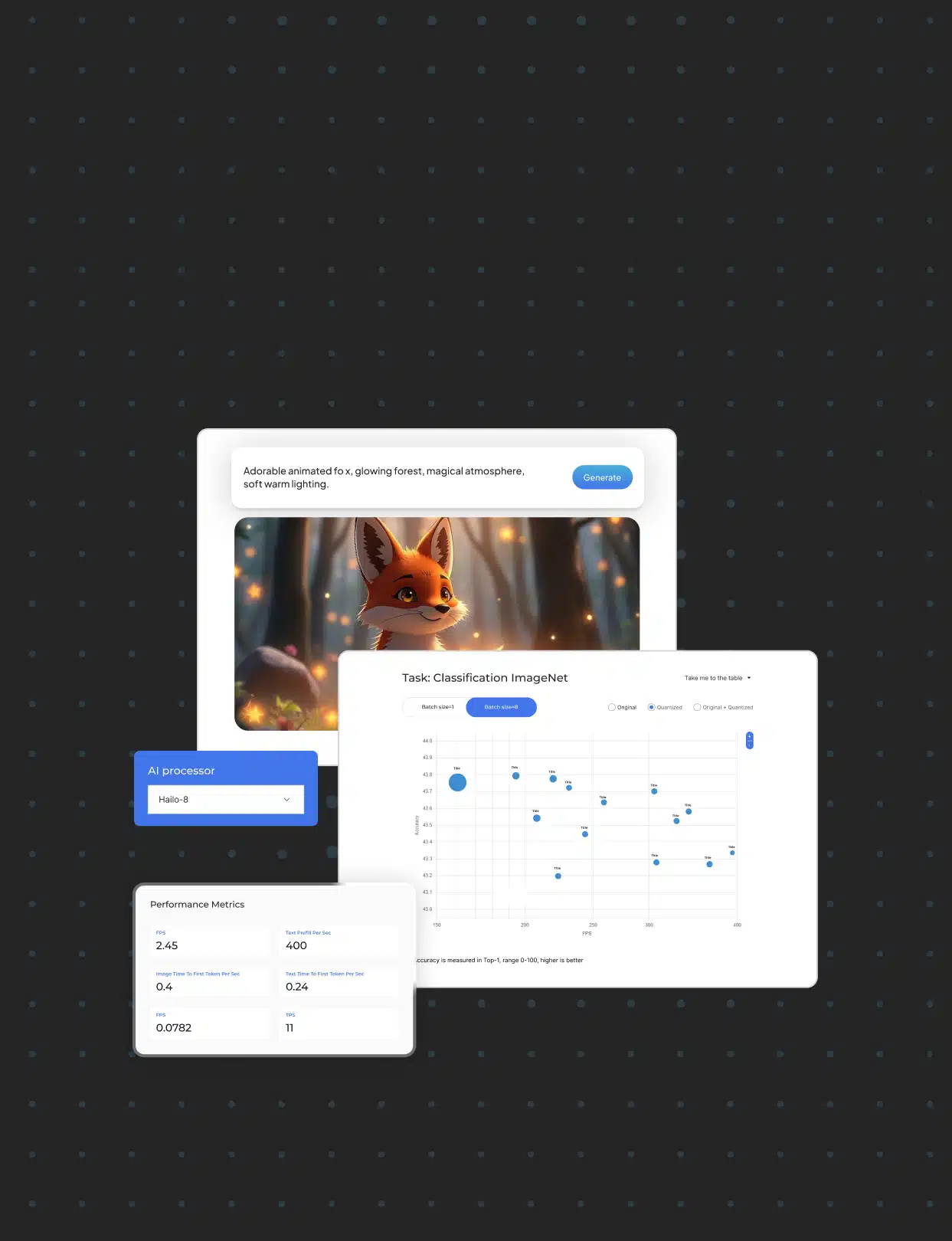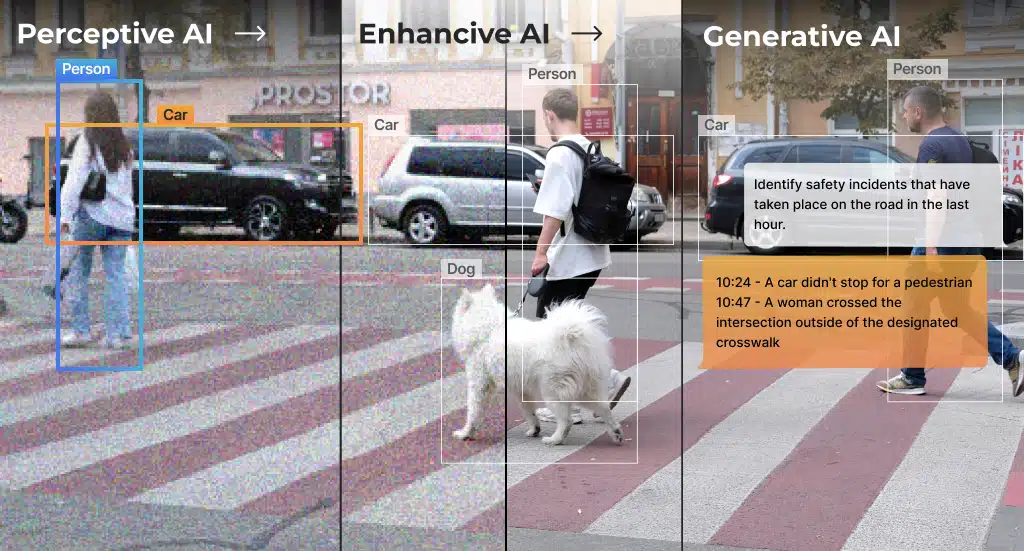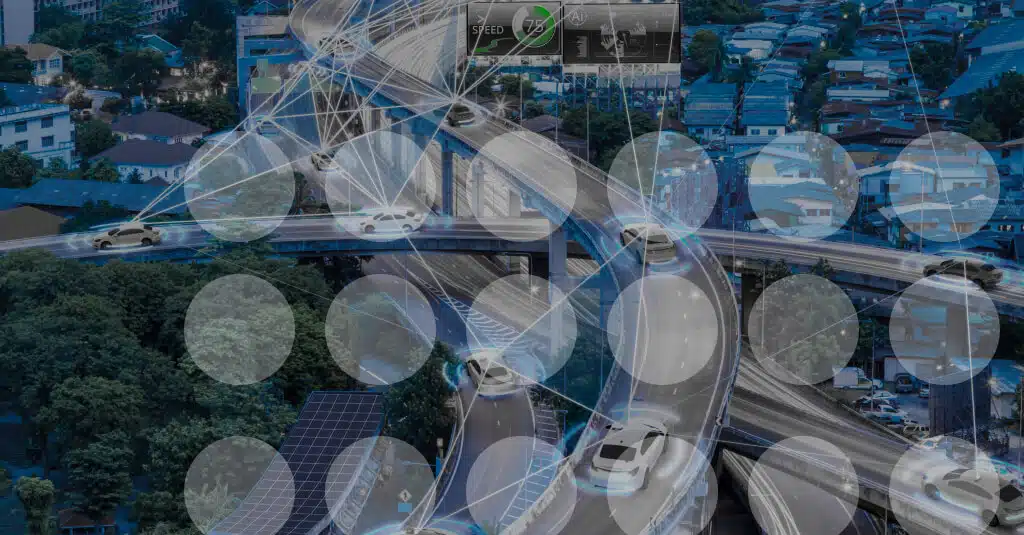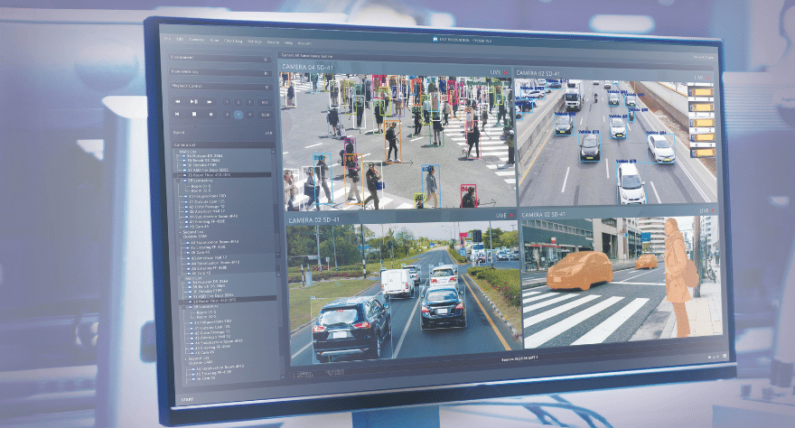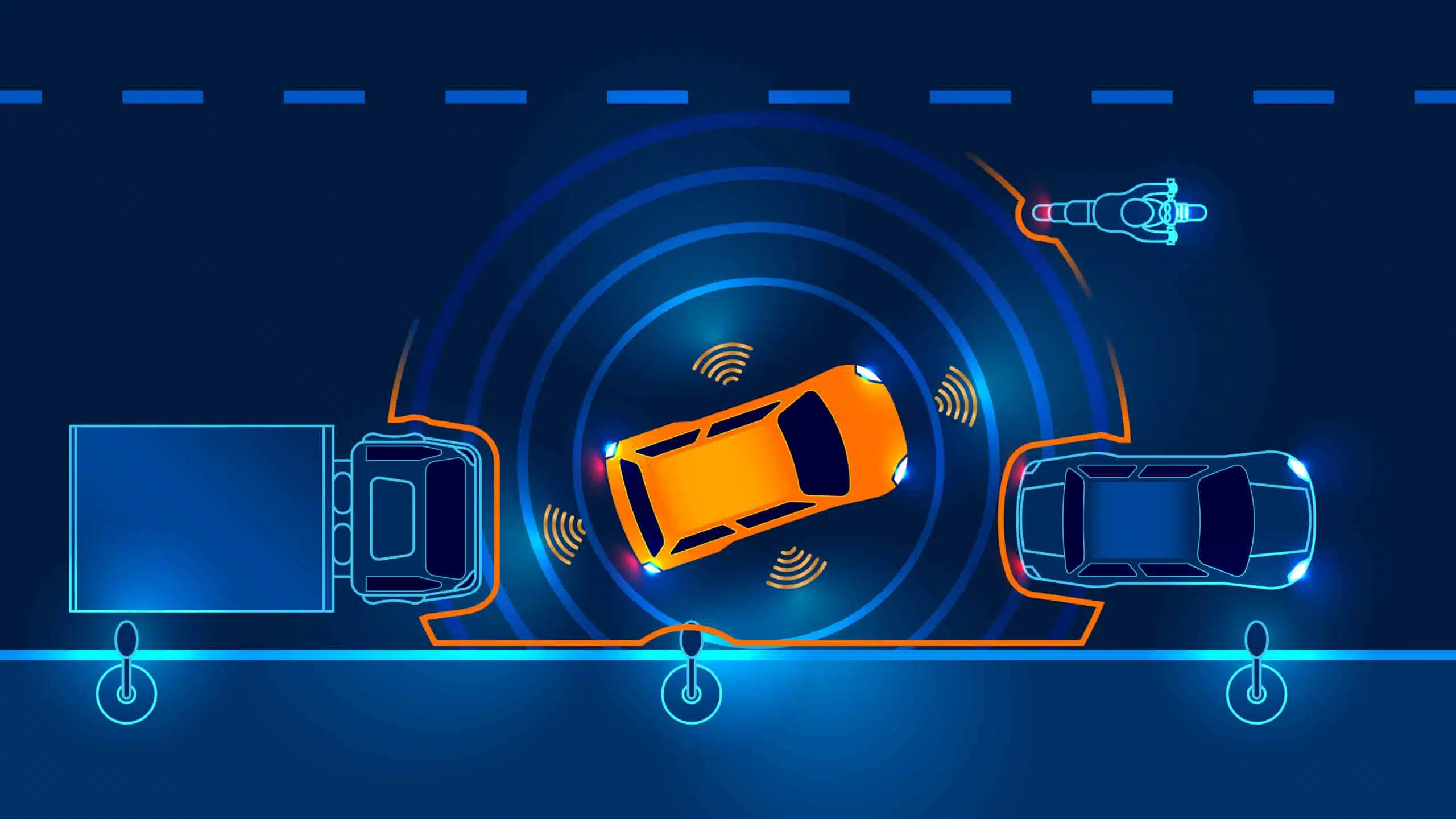How the Edge AI Box Can Accelerate Adoption of AI for Surveillance and Security

Working “in AI”, having this amazing technology at your fingertips and spending your days discussing customer requirements and use cases across verticals and geographies, can skew one’s perception of how “smart” the world really is. AI is far along in automotive, mobile, big data, medical imaging and others, but there are still sectors that are just on the verge of their AI transformation, perhaps only recently having undergone a digital one. In my experience, it is, perhaps surprisingly, the case with surveillance for physical security applications.
Smart AI cameras and Intelligent Video Analytics (IVA, or VCA – Video Content Analytics) are being adopted, but more slowly that one would expect. A November 2020 North America-focused survey by Genetec found that only 23% of physical security environments have video analytics deployed. It also found that cloud adoption (mostly for storage, but also for video analytics) has been slow and that Video-Surveillance-as-a-Service (VSaaS, which usually incorporates IVA) use is very low (only about 2% have it deployed). Another 2020 survey by IFSEC Global and IDIS (this time more focused on the UK and outside of North America) found that, while the vast majority of security professionals recognize the value of video analytics for security operations, over half (54%) are not using AI and deep learning in their surveillance systems. Also interesting is that of those that are using AI, only 9% use edge-based analytics!
It seems that AI is starting to come in and users are beginning to discover the added benefits of smart analytics. But, for the most part, the small retail chain owner, the building management company and the security department for a medium-sized enterprise are still using a multitude of basic security cameras, relying on enlarged human staff for screen monitoring and legwork. And that is probably the best-case scenario.
What is stymieing fast adoption? The top 3 reasons for not using video analytics have been cited by the security professionals surveyed by IFSEC-IDIS as: cost, data security and privacy and uncertainty about RoI (cited in their top 3 reasons by 85%, 52% and 50%, respectively). These understandable concerns have a lot to do with how IVA is deployed, rather than with the AI itself. Integrated into cloud-based or on-premise VMS (Video Management Systems), it just doesn’t make sense for everyone.
Closed-loop private surveillance systems are common for several reasons, data privacy and system security being two leading ones. Holding a backlog of unnecessary data creates privacy issues. So the closer your video analytics loop is, the shorter the time raw data is kept in the system and only relevant data is being stored. A closer analytics loop also narrows the cyber-attack surface. Cyber threats are becoming increasingly relevant for all sorts of businesses and thus a prominent concern for security professionals. In fact, the IFSEC-IDIS survey found that 76% of end users were either ‘quite concerned’ or ‘very concerned’ about the vulnerability of their surveillance systems to cyber-attacks.
On the RoI front, the economics of purchasing and maintaining your own VMS server or ongoing payments for a pricey SaaS add-on don’t work out for everyone, either. Looks like it is true for both smaller security operations with smaller budgets and more modest surveillance requirements and larger ones with robust operations and high cost-consciousness.
This is where edge AI comes in. “Then why not get intelligent cameras?” one might rightly ask. For one, today’s market offers only a limited choice of AI-enabled cameras, not wide enough to address varying pricing and performance requirements for different verticals and use cases. More importantly, the install base for basic cameras is massive. By one estimate, there are 770 million closed-circuit surveillance cameras deployed around the world and that number is expected to reach 1 billion in 2021 . Even if every new camera is a smart camera, it will take many years to transform the field. With these major impediments, any meaningful acceleration of widespread adoption of edge AI will require power multipliers.
A cool piece of equipment increasingly seen in the market in recent years is the Edge AI Box. An addition to the traditional NVR/DVR (Network or Digital Video Recorders) device that may also be categorized as an embedded box PC or IPC (Industrial PC), this is a device that can connect to multiple regular cameras and provide advanced AI processing capabilities. This edge AI appliance houses an applications processor and an AI processor, either designed into the box or on a standard form factor module – M.2 or mini PCIe – inserted into the appropriate expansion slot. It uses standard camera interfaces (Ethernet, MIPI etc.) and is designed to be small (the size of a home DVR, some as small as an internet router), low-power and require no active cooling.
Intelligent Surveillance Deployment Options
| Cloud-based | On-premise server | Edge AI Box | Intelligent camera |
| SaaS payment model | Large up-front investment (server & SW license) | Small up-front investment | Small up-front investment |
| No control of data & software | Full control of data & software | Full control of data & software | Full control of data & software |
| Dependence of on connectivity, possible latency | Ongoing management & maintenance requirements (hardware & software) | Minimizes storage requirements | Minimizes storage requirements |
| Unlimited AI processing (theoretically) | Connects several cameras (no need to replace existing equipment) | Limited processing capacity (processors vary) |
Edge AI computers, like intelligent cameras and other computing devices, vary widely in the capabilities they afford their users. To make the right choice, there are four major performance parameters that a user must take into consideration: number of connected cameras (or video streams to be processed), cameras’ resolution, AI tasks performed concurrently and the processing/output frame rate (in terms of latency or FPS). The four are always in a trade-off relationship (for instance, using higher resolution cameras would mean using fewer of them or lowering output rate).
A major constraint for most Edge AI Box devices on the market is the AI processor (though the applications processor and the number and speed of interfaces can also pose limitations). The more high-performance and, more importantly, high-efficiency the AI processor is, the less this trade-off is going to be felt by the user. That means more cameras, higher resolution, real-time processing and running multiple AI tasks.
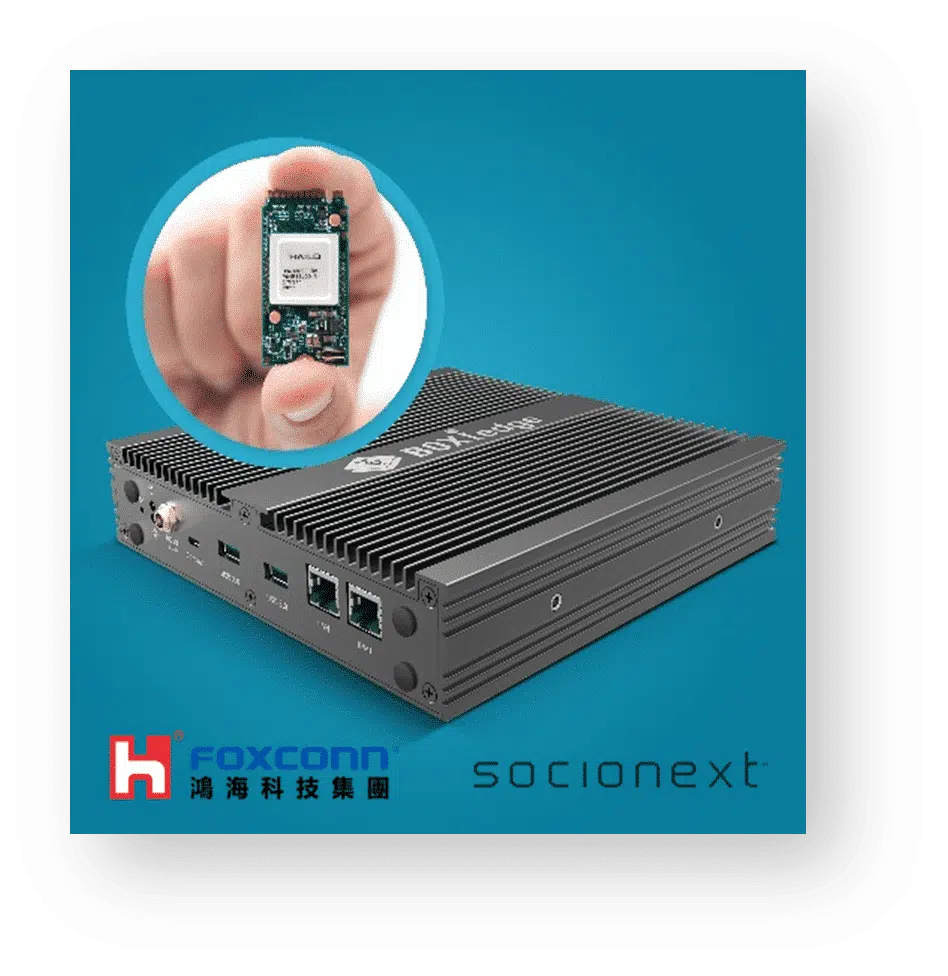
BOXiedge by Foxconn and Socionext – a fanless, small and low-power edge AI solution that can process video streams from over 20 cameras in real time. Powered by the Hailo-8TM M.2 AI acceleration module
This ability to multi-task is a power-multiplier when it comes to making security operations more efficient and the potential to draw additional business value from the device. While monitoring the space for unauthorized entry and suspicious behavior, you can also people count, identify hot spots where people linger or traffic accumulates, collect data on the type of visitors and so on. In this manner, regular security monitoring operations can also contribute to better traffic and resource management or more targeted and successful sales promotions.
The Edge AI Box is a turnkey, edge AI solution that allows users to capitalize on existing surveillance assets. In some use cases we’ve seen, it is the most cost-effective option of introducing IVA into retail, enterprise, smart city and industrial security operations. Both small- and large-scale operations can find cost and RoI benefits in this implementation method, but for smaller businesses this could potentially mean access to previously cost-prohibited technology and a major boost to business.
The road to widespread IVA and automated security monitoring is still long. Seeing this technology up-close, witnessing what it can do when it is based on a powerful AI processor, I can’t help but be excited about the potential of Edge AI Boxes to be a major vehicle for AI and IVA adoption in security operations across industries.
Sources
State of Physical Security 2020: Operations in a Time of Crisis, Genetec, November 2020, https://resources.genetec.com/en-industry-reports/report-2020
Video Surveillance 2020 Report: Analytics, Cyber Security and COVID-19, IFSEC Global and IDIS, https://www.ifsecglobal.com/resources/the-video-surveillance-report-2020/
Paul Bischoff, Surveillance camera statistics: which cities have the most CCTV cameras?, Comparitech, 22/07/2020, https://www.comparitech.com/vpn-privacy/the-worlds-most-surveilled-cities/
Elly Cosgrove, One billion surveillance cameras will be watching around the world in 2021, a new study says, CNBC, 06/12/2019, https://www.cnbc.com/2019/12/06/one-billion-surveillance-cameras-will-be-watching-globally-in-2021.html



